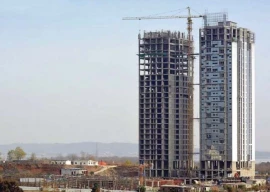
Since the turmoil in Egypt, commentators have been wondering whether Pakistan was ready for a similar uprising. Recent research by Filipe Campante and Davin Chor, of Harvard Kennedy School and Singapore Management University respectively, finds a connection between education and political participation. Access to productive job opportunities reduces incentives for political activism. Egypt has been among the fastest growing countries of the world when it comes to average years of schooling. But the economy has been far less dynamic — generous US assistance notwithstanding. Mahbubul Haq used to say that education per se is “seditious”. According to him, the Soviet Union imploded due to the compulsory spread of education.
The twentieth anniversary edition of the Human Development Reports, pioneered by Mahbubul Haq, contains interesting comparative data on educational attainment in Egypt, India and Pakistan. It helps throw some light on the impact of education on the likely course of events in Pakistan; both political and economic. In Egypt, 66.4 per cent of those aged 15 and above are literate, followed by 62.8 per cent in India and 53.7 per cent in Pakistan. In terms of the Human Development Index (HDI) 2010, Egypt scores 101 against India’s 119 and Pakistan’s 125. It is common knowledge that the HDI is based on education, health and income. One can, therefore, say that Egypt is ahead of India and Pakistan in terms of human development.
Among the politically volatile population group of 25 years and above, 36.1 per cent of Egyptians have been to secondary school at least. The corresponding numbers for India and Pakistan are 22.2 per cent and 16.8 per cent. Similarly, the gross tertiary enrolment ratio is 31.2 per cent for Egypt, 13.5 per cent in India and a mere 5.2 per cent in Pakistan. The higher proportions in tertiary education in Egypt are made possible by the large base of primary and secondary education. Net primary and secondary enrolment in Egypt is 93.6 and 71.2 per cent. The ratios for India are 89.8 and 57 per cent. Pakistan has the lowest tally of 66.1 and 32.5 per cent. Egypt also has the lowest dropout rates. As a percentage of GDP, public expenditure on education in Egypt is 3.8 per cent and 3.2 per cent in India. Pakistan spends a pittance.
It seems ‘Egyptisation’ of Pakistan is unlikely. The revolutionary material of an angry, educated population is far less in proportion. And if the latest Pakistan Labour Force Survey is to be believed, this relatively smaller proportion of the educated in Pakistan has an even smaller rate of unemployment. Freedom of expression, freedom of association and the opportunity to change a government (through elections or simply by electing a new prime miniser through parliament) also stand in the way of our Egyptisation. The anger of some highly educated individuals has found expression in the violent ways of the Taliban revolution, but that is a different story. Landlessness, mass unemployment of the illiterate and semi-illiterate, high and rising inflation and poverty provide conditions for a proletarian revolution, but there is no organised political force to support it. We know only one revolution — the Khaki revolution, conditions for which can always be constructed. Let’s, however, hope that Mian Shahbaz Sharif’s efforts to catch up with India in education will also strengthen our democracy.
Published in The Express Tribune, February 25th, 2011.
1725030039-0/Untitled-design-(2)1725030039-0-405x300.webp)





1614423942-7/-ET-Burns-Road-by-Athar-Khan-(8)1614423942-7-270x192.webp)










COMMENTS (10)
Comments are moderated and generally will be posted if they are on-topic and not abusive.
For more information, please see our Comments FAQ